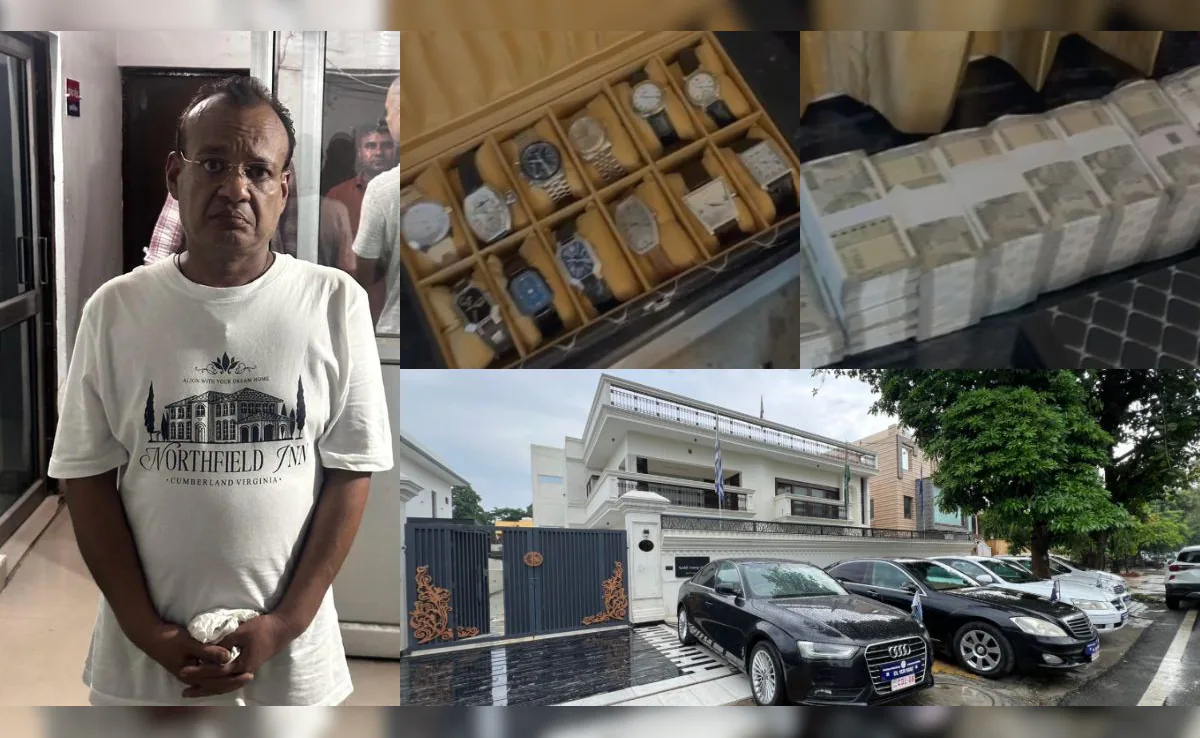Indian Fake Embassy Operation Busted Arrested in Major Scam

Crackdown on Major Visa Scam Uncovers Shocking International Racket
In a startling revelation that has sent shock waves through diplomatic and law enforcement communities, Indian authorities have arrested a man accused of operating a wide reaching Indian Fake Embassy Operation. The accused was allegedly running multiple bogus diplomatic offices that posed as legitimate embassies and consulates of various countries. These operations primarily targeted individuals desperate to secure visas, work permits, and other documentation.
The case has not only highlighted the vulnerabilities in immigration systems but also exposed the growing sophistication of transnational scams. With the arrest, a major illegal operation has been dismantled but the fallout continues as international agencies investigate the full extent of the Indian Fake Embassy Operation.
How the Indian Fake Embassy Operation Worked
According to official reports, the arrested individual used forged diplomatic documents, fake websites, and counterfeit stamps to create the illusion of legitimacy. He set up offices in rented buildings, decorated them to resemble embassies, and hired staff posing as visa officers and diplomats.
The operation offered services ranging from student visas to permanent residency applications. Victims were lured through fake social media advertisements and word of mouth within vulnerable communities.
Officials revealed that this Indian Fake Embassy Operation had been active for over three years. The fake embassies operated in several Indian cities including New Delhi, Mumbai, Hyderabad, and Bengaluru.
Victims of the Fraudulent Scheme
Thousands of unsuspecting individuals fell prey to the scam, paying exorbitant fees for visa processing, documentation, and “expedited services.” Many of the victims were from rural backgrounds, had limited awareness of diplomatic processes, and were desperate to go abroad for education or work.
“I paid almost INR 2.5 lakh for a Canadian work visa,” said a victim from Punjab. “Everything looked real, the building, the staff, even the appointment system. I only found out it was a scam when I reached the real embassy.”
The Indian Fake Embassy Operation has robbed people not just of their savings, but also of their dreams. Investigators are now working to trace the extent of financial fraud and identify all the affected individuals.
How Authorities Cracked the Case
The breakthrough in the case came after several embassies in India began reporting unusual documentation presented by visa applicants. Following these complaints, the Ministry of External Affairs launched a covert investigation.
Undercover agents posed as visa seekers and were able to gather sufficient evidence to raid the bogus facilities. The operation uncovered:
- Counterfeit embassy stamps and seals
- Fake official letterheads
- Unlicensed firearms and surveillance equipment
- Large caches of forged documents
As more details emerge, authorities believe this Indian Fake Embassy Operation had ties to international crime networks, possibly involved in human trafficking and money laundering.
Impact on India’s Diplomatic Relations
The case has caught the attention of several foreign governments, particularly those whose names were used to set up fake embassies. Countries including Canada, the UK, and Australia have demanded stricter oversight and have temporarily suspended fast track visa processing in certain Indian cities.
While Indian authorities have moved swiftly to contain the scandal, the Indian Fake Embassy Operation has dealt a blow to the country’s diplomatic reputation. Officials have promised stronger verification systems and better public awareness campaigns to prevent future incidents.
Legal Proceedings and Charges
The main accused, identified as Ramesh Chandar (name changed for legal reasons), faces multiple charges including:
- Impersonation of public servants
- Forgery of official documents
- Fraud under the Indian Penal Code
- Violation of immigration laws
Authorities have also detained four other individuals suspected of being accomplices in the Indian Fake Embassy Operation. Their roles ranged from recruitment to IT support, website management, and financial laundering.
Legal experts predict a lengthy trial given the international implications and scale of the scam. Meanwhile, recovery of defrauded funds remains a major challenge.
Government Response and Policy Changes
In the wake of the scandal, the Indian government has announced a three tiered response:
- Creation of a National Verification Portal: A centralized website for verifying embassy and consulate credentials.
- Public Awareness Drives: Campaigns aimed at educating the public on how to recognize legitimate diplomatic channels.
- Stricter Licensing for Visa Consultants: All immigration consultants will now require mandatory government registration.
Officials believe these measures will reduce the chances of another Indian Fake Embassy Operation and restore confidence in the system.
Digital Footprints and Cyber Evidence
One of the most alarming findings was the extensive digital infrastructure supporting the Indian Fake Embassy Operation. Fake embassy websites featured secure looking portals, customer service lines, and even appointment booking features. All of these were sophisticated enough to fool tech savvy users.
Cyber forensic teams are now working to trace the IPs, hosting services, and digital wallets used in the scam. Preliminary reports suggest that cryptocurrencies were used to avoid traditional banking scrutiny.
Expert Reactions and Social Commentary
Cyber security experts, legal analysts, and diplomats have all weighed in on the implications of the scandal. Many emphasize the need for international cooperation to tackle crimes that straddle multiple borders.
“Such scams don’t just affect one country,” noted an analyst from the Global Anti-Fraud Network. “The Indian Fake Embassy Operation highlights systemic vulnerabilities that can be exploited anywhere in the world.”
Social media, meanwhile, has erupted with criticism of lax oversight and the desperation of the poor that scammers prey upon. Hashtags like #FakeEmbassyScam and #VisaFraudIndia have trended across platforms.
Conclusion: What the Indian Fake Embassy Operation Teaches Us
This high profile case is more than just an isolated crime—it’s a wake-up call. The Indian Fake Embassy Operation underscores the urgent need for public education, tighter regulations, and international cooperation.
Citizens are advised to always verify embassy credentials through official government portals and consult only licensed visa agents. Governments, on the other hand, must step up technological safeguards and information sharing protocols.
Final Thoughts: A Call for Vigilance
The Indian Fake Embassy Operation may be over, but the threat of similar scams remains. As long as people are willing to pay for faster immigration outcomes, there will be bad actors ready to exploit them.
This case should serve as both a warning and a lesson for individuals, institutions, and nations.



